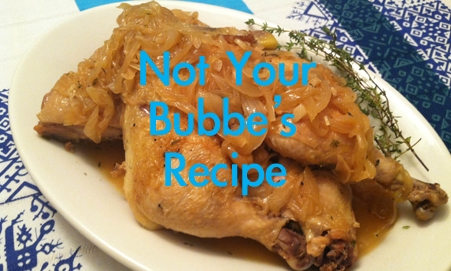Amid the hectic grocery shopping, chicken soup-making, cleaning, and general preparations, there is something intensely comforting about finally sitting down with family and friends at your impeccably set table on the eve of Rosh Hashanah and getting your fingers sticky with challah and apples dipped in honey.
Like many other Jewish holidays, Rosh Hashanah is filled with symbolic foods. To start the new year, the foods are meant to prompt us to reflect on the past year and to represent our aspirations for the year to come. In the Talmudic era, rabbis recommended people eat gourds, fenugreek, leeks, beet greens, and dates because the Hebrew words were phonetically similar to words related to good judgment and casting away sins and enemies. According to Gil Marks, different communities added their own traditions, which were often phonetic puns as well, such as carrots, whose Hebrew name, “gezer”, can also mean “to tear” and “decree,” signifying that any evil decree should be torn up. Additionally, carrots are sweet and look much like coins when sliced in rounds, a hopeful symbol for good fortunes in the coming year.
Today, the most famous food tradition associated with Rosh Hashanah is the custom of eating apples dipped in honey. It has become so entrenched in the holiday ritual that a special blessing is recited over it before the holiday meal, asking God to “renew for us a good and sweet year.” Gil Marks’ research found the first explanation for the introduction of apples, in the 12th century, was the hope that the shiny fruit would bring a bright future for the Jewish community. Just as the carrot took on many meanings, eating apples and honey became a ritual with multiple implications. As indicated in the blessing, eating apples and honey represented hope for a sweet year. The roundness of the apple is also described as a reminder of the ongoing circle of life and in the ancient Near East, honey symbolized immortality.
In addition to starting the holiday with apples dipped in honey, many families have a tradition of dipping slices of round, raisin-filled challot into honey throughout the holiday season (from Rosh Hashannah through Sukkot). And, of course, apples and honey can figure prominently in the dessert department.
This chicken recipe takes the tradition of eating apples and honey one step farther by bringing the theme into the entree. Why confine them to appetizers and desserts? Cooking the chicken in apple cider and honey creates a subtle sweetness and ensures a moist, tender chicken. The earthiness of the dark meat combined with the onions, garlic, and thyme reign in the sweetness a bit. As a final touch, feel free to garnish with pomegranate seeds, which symbolize a desire to perform a multitude of mitzvot in the year to come. Feel free to sop up any leftover sauce with your challah.
Not Your Bubbe’s Rosh Hashanah Chicken
Ingredients:
4 tablespoons extra virgin olive oil
4 chicken quarters
3 large yellow onions, sliced
1 head garlic, peeled whole cloves
3 tablespoons thyme leaves, stripped
½ tablespoon honey
1 cup apple cider or apple juice
1 cups chicken stock or water
Pomegranate seeds to garnish (optional)
Salt and pepper, to taste
Directions:
1. Heat a Dutch oven or saucier over medium heat. Season chicken with pepper. Add two tablespoons of olive oil to the pan and place chicken skin side down. Let the chicken brown on both sides (about 5 minutes each), then remove from pan and set aside.
2. Sautee onions, garlic, thyme, and honey, stirring regularly until onions have caramelized.
3. Add apple cider and stock. Let the liquids come to a simmer then add chicken back to pot. Continue cooking on medium for fifteen minutes until it is completely cooked.
4. Serve with sauce and onions poured over the chicken. Garnish with pomegranate seeds or thyme.
Also Try:
Not Your Bubbe’s Moussaka with Eggplant and Zucchini
Not Your Bubbe’s Peanut Butter Lag B’Omer S’mores
Not Your Bubbe’s Modern Gefilte Fish Fillet









